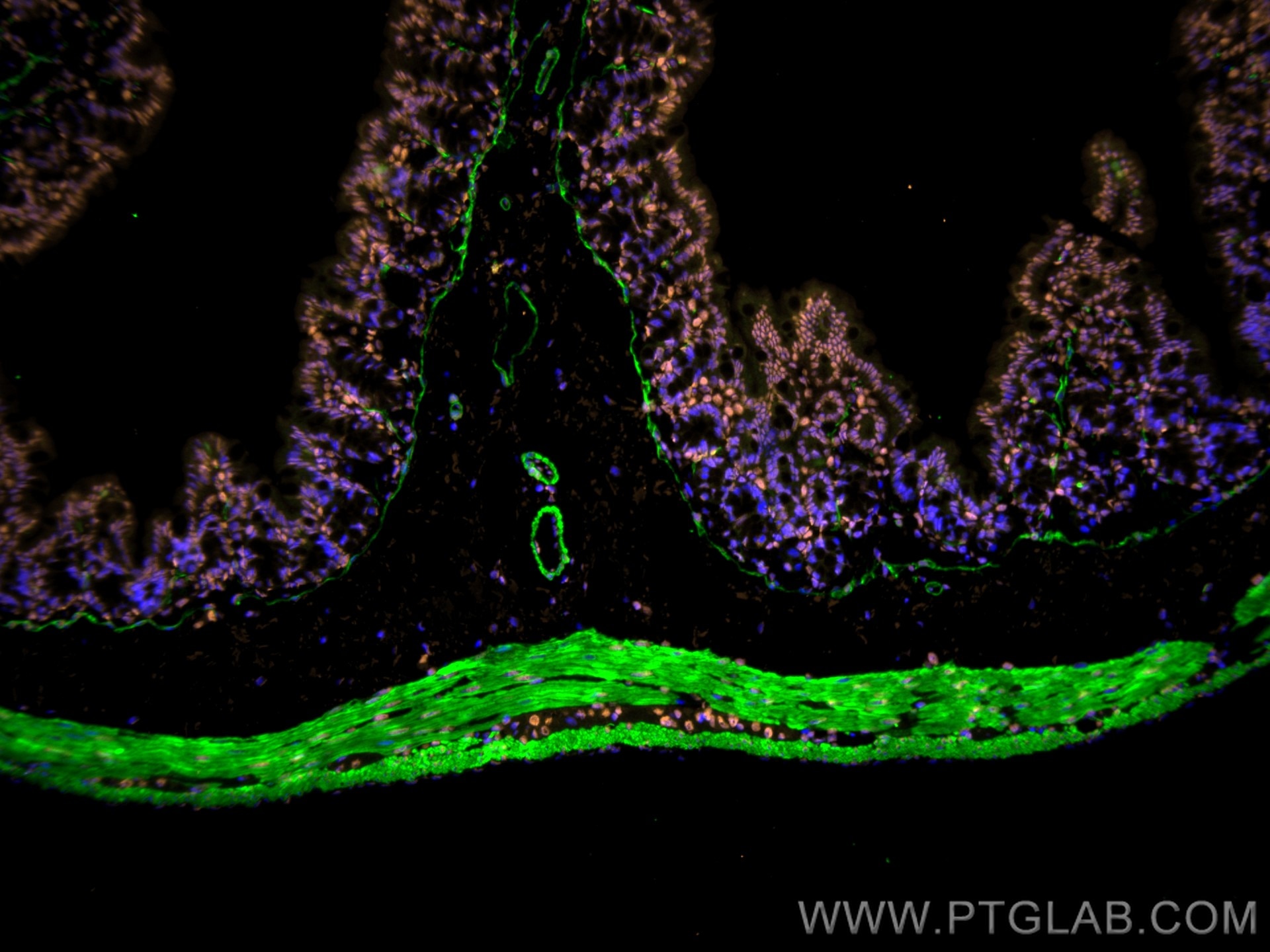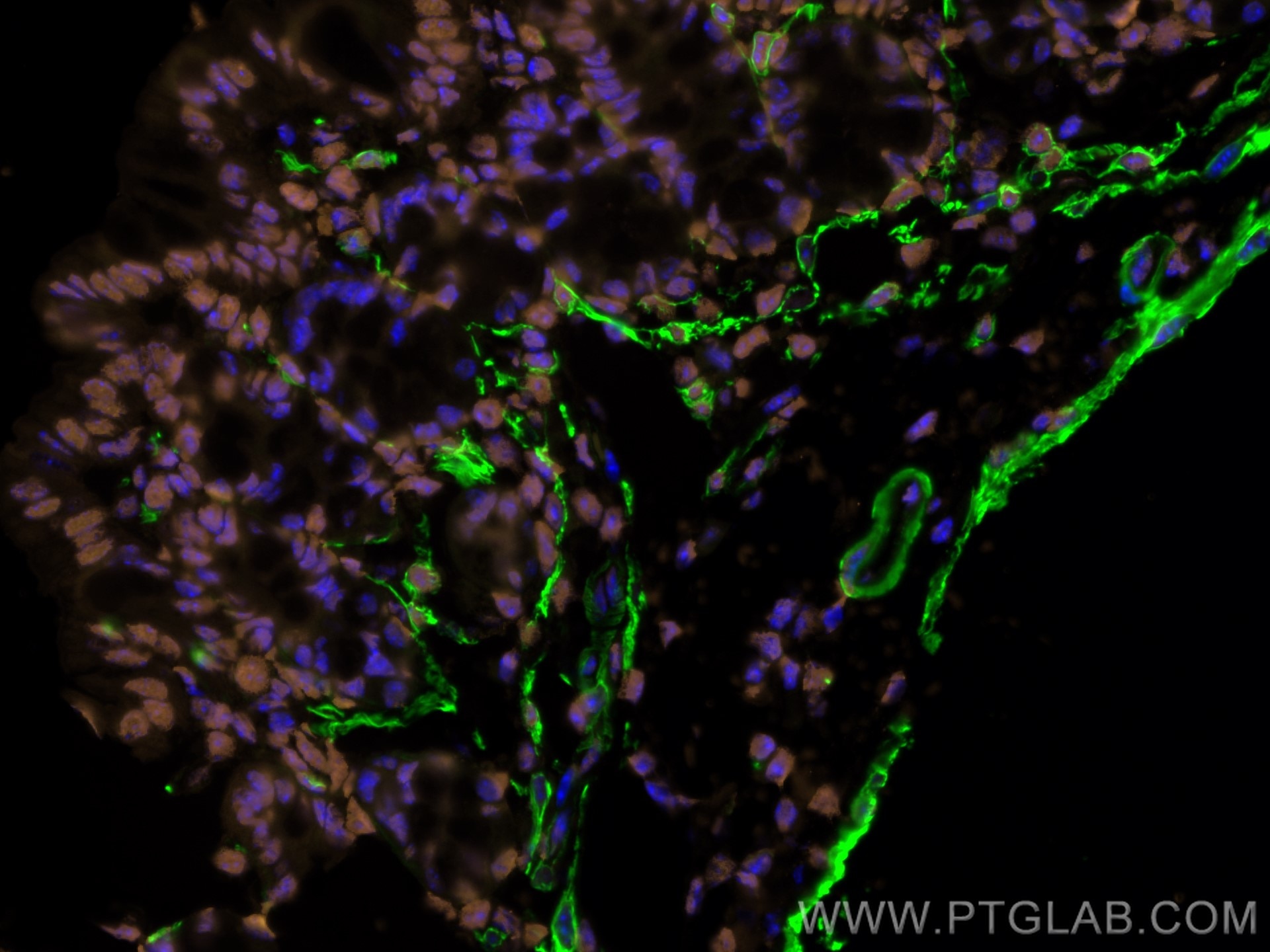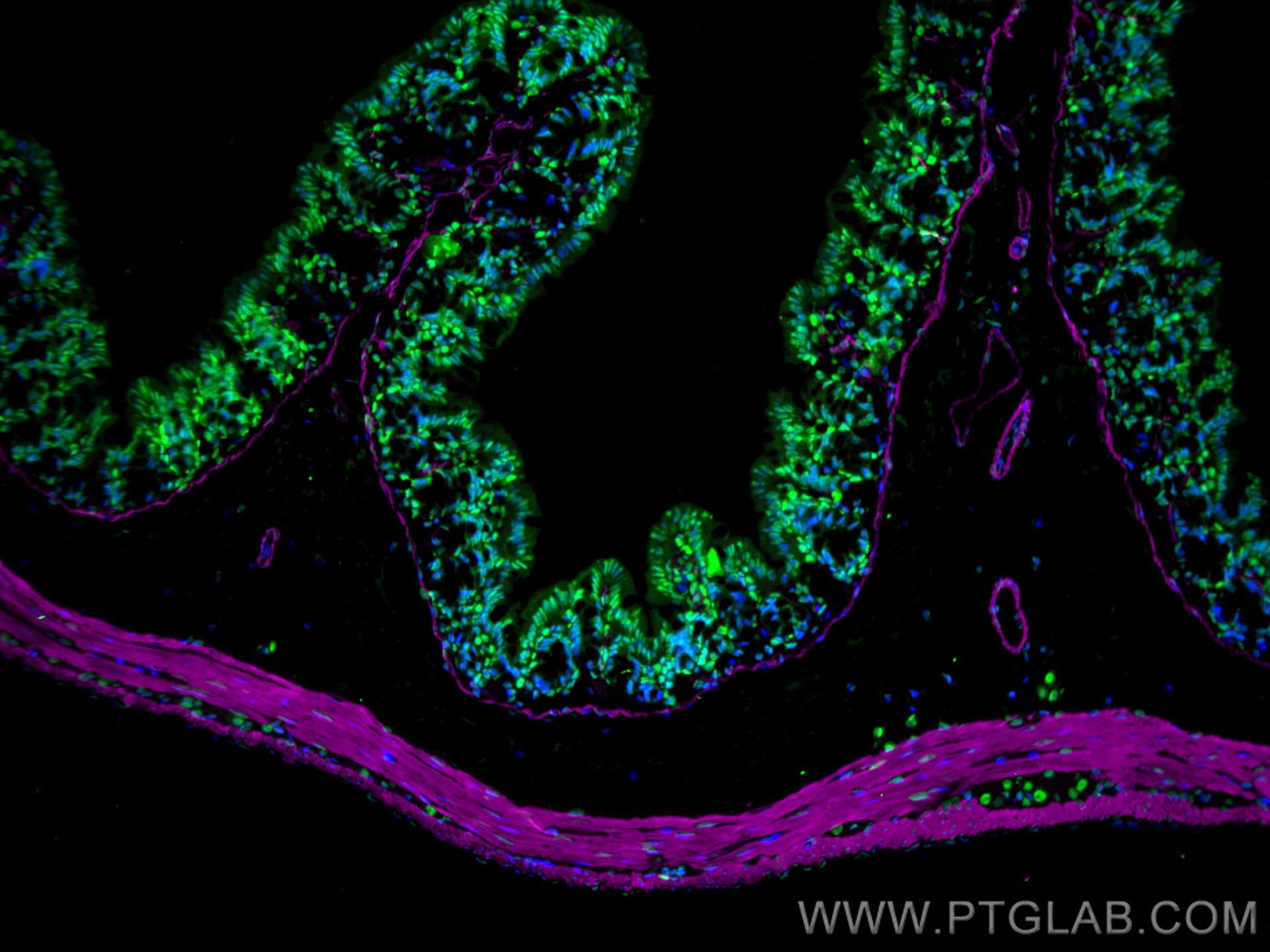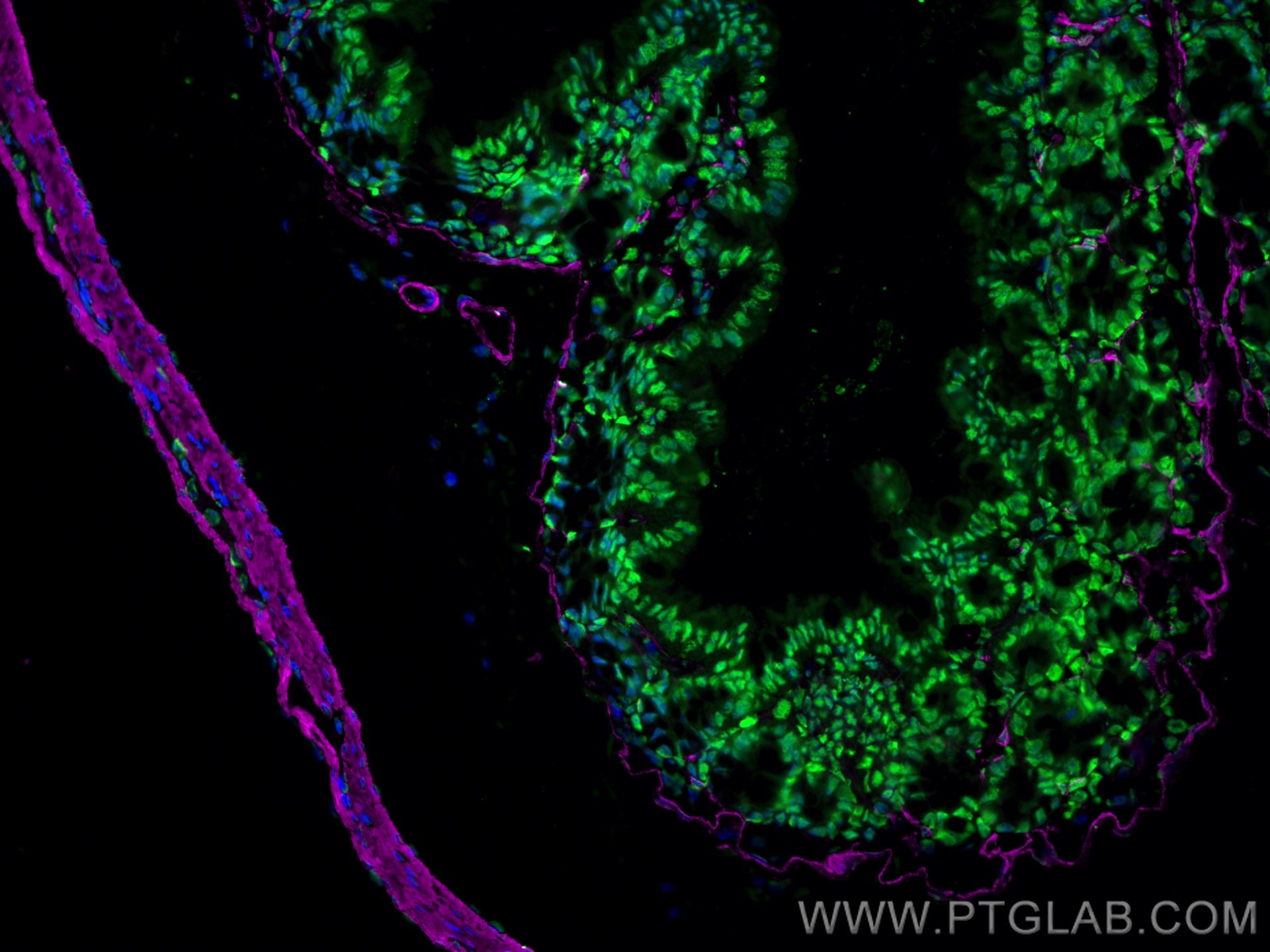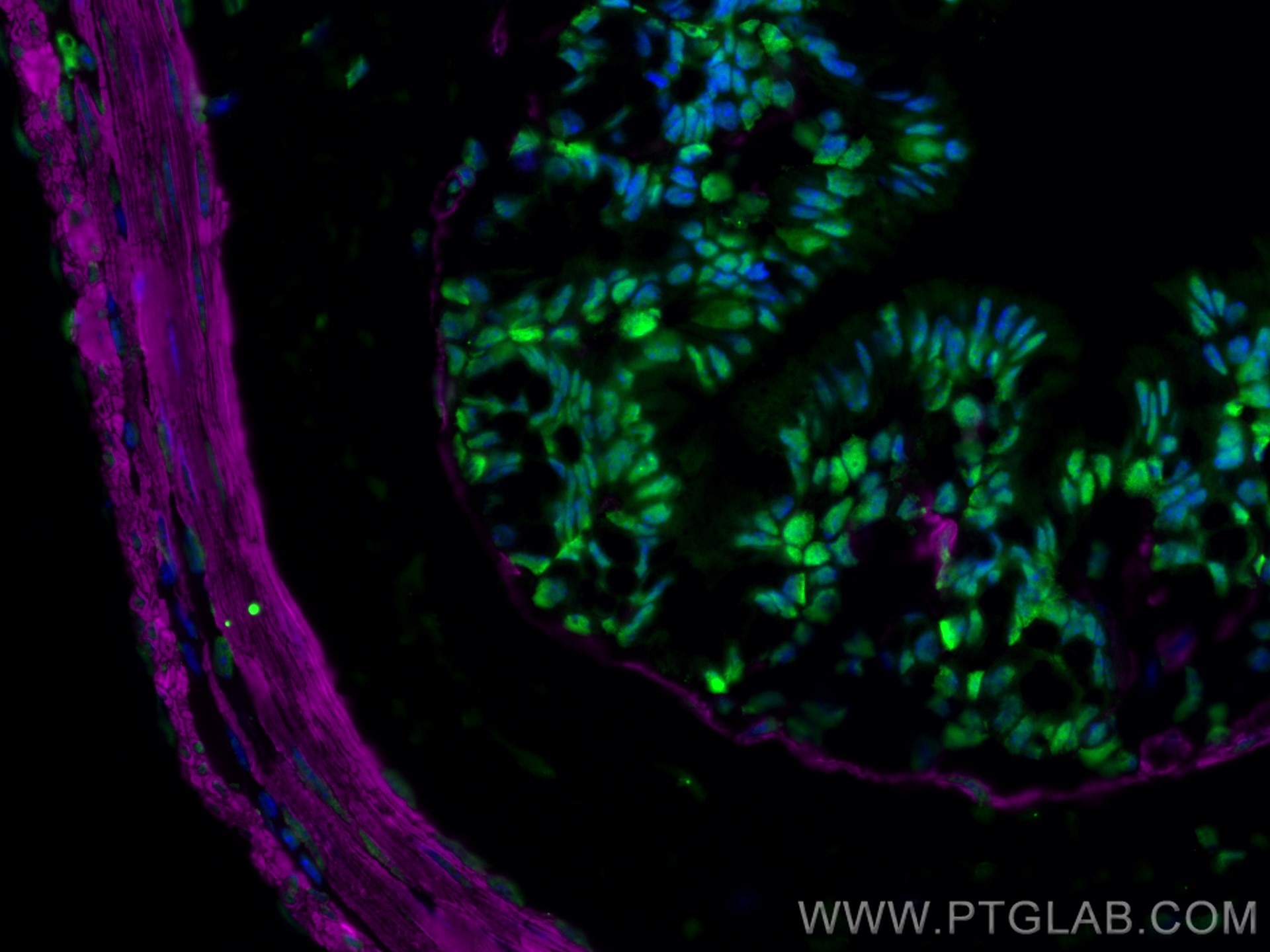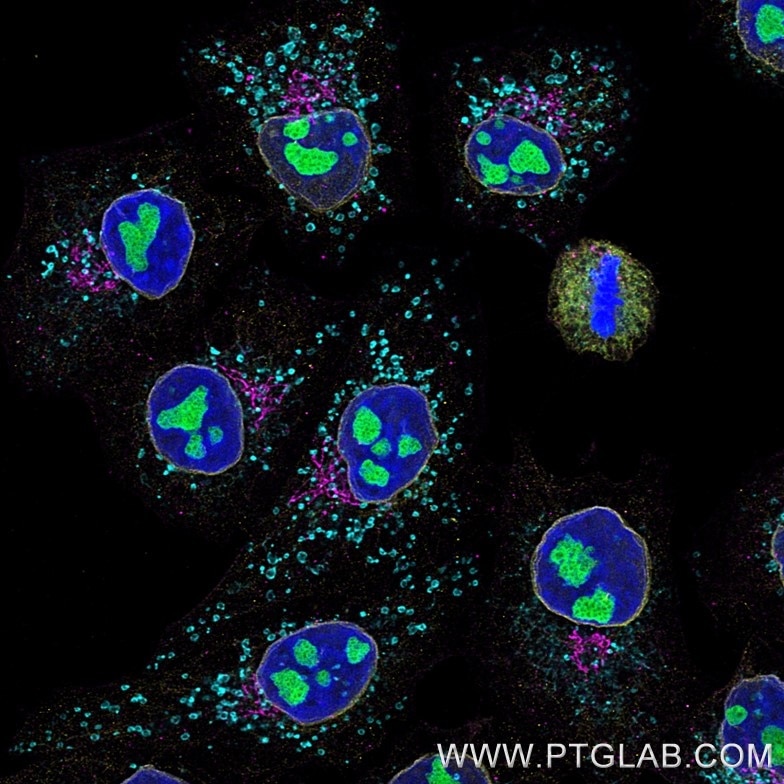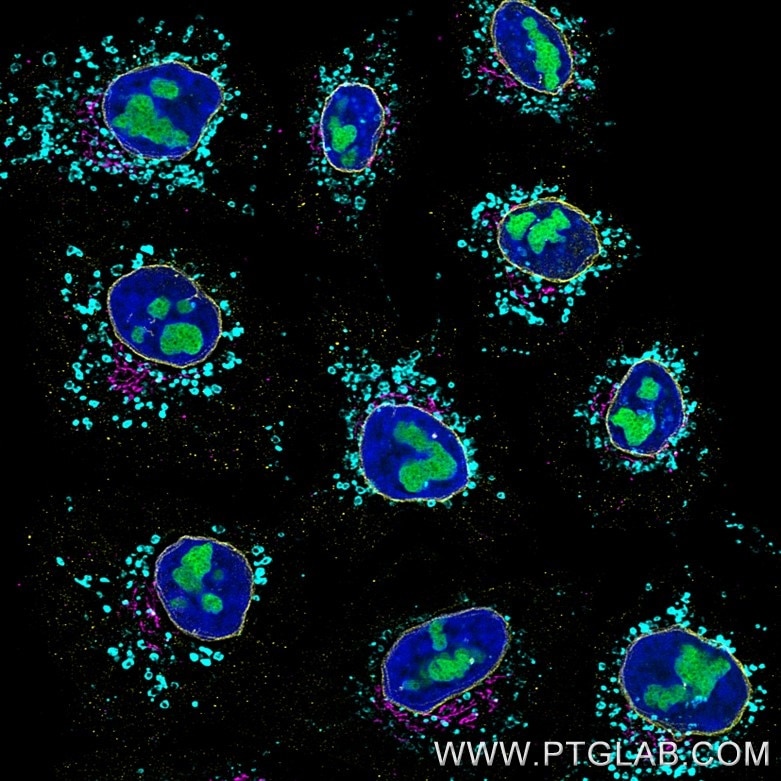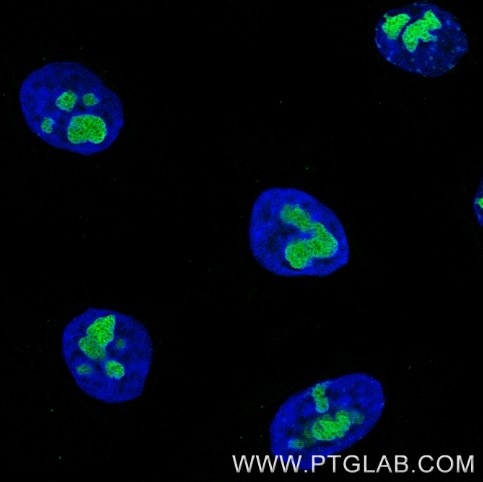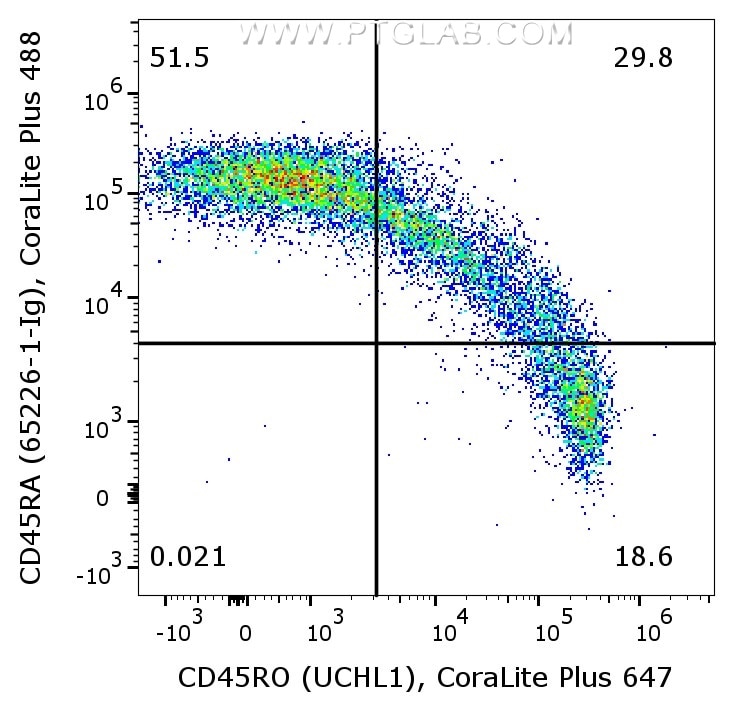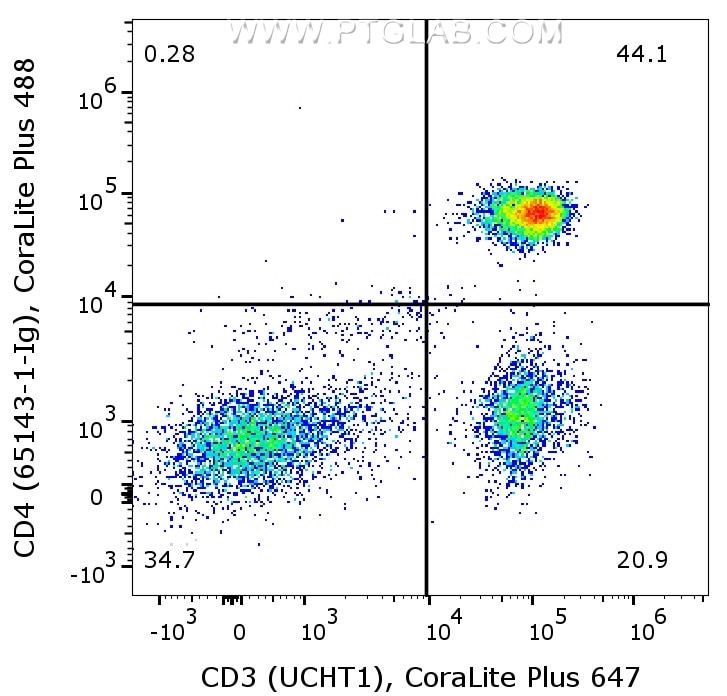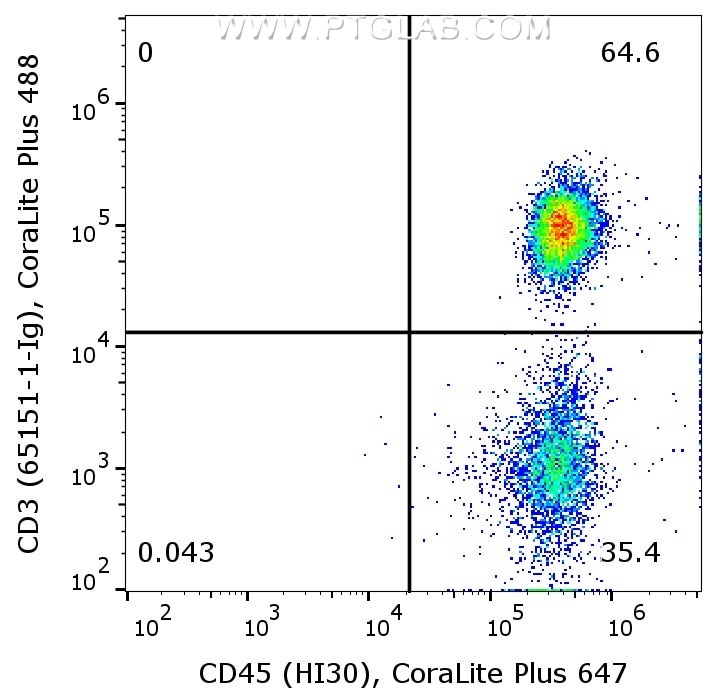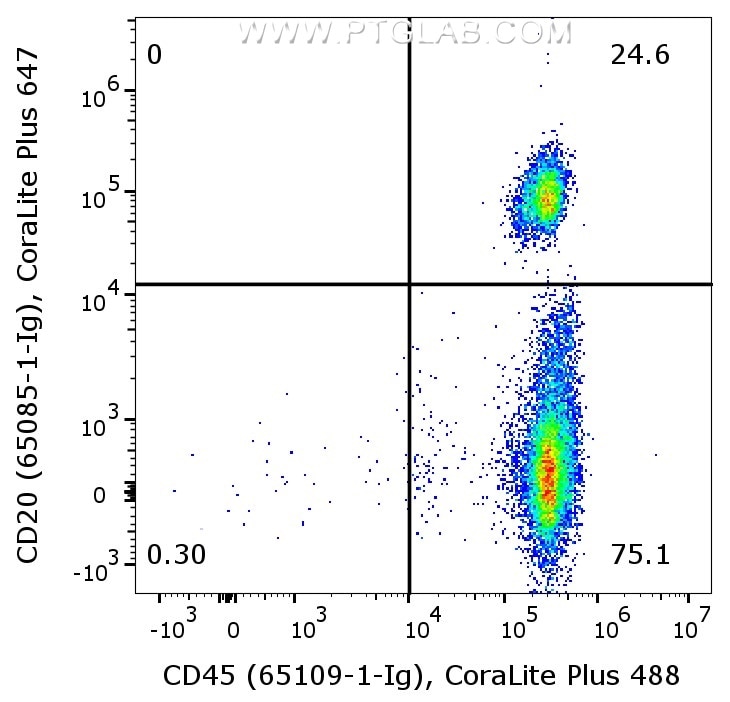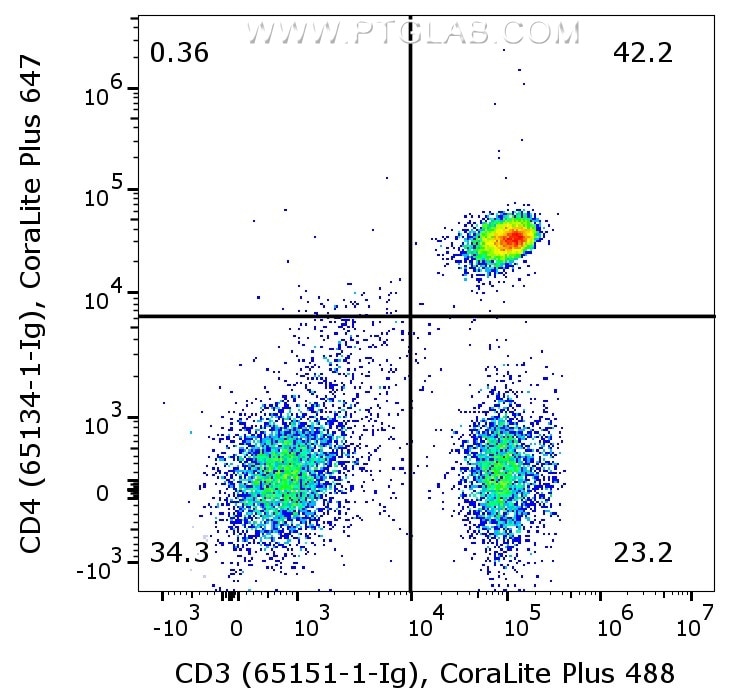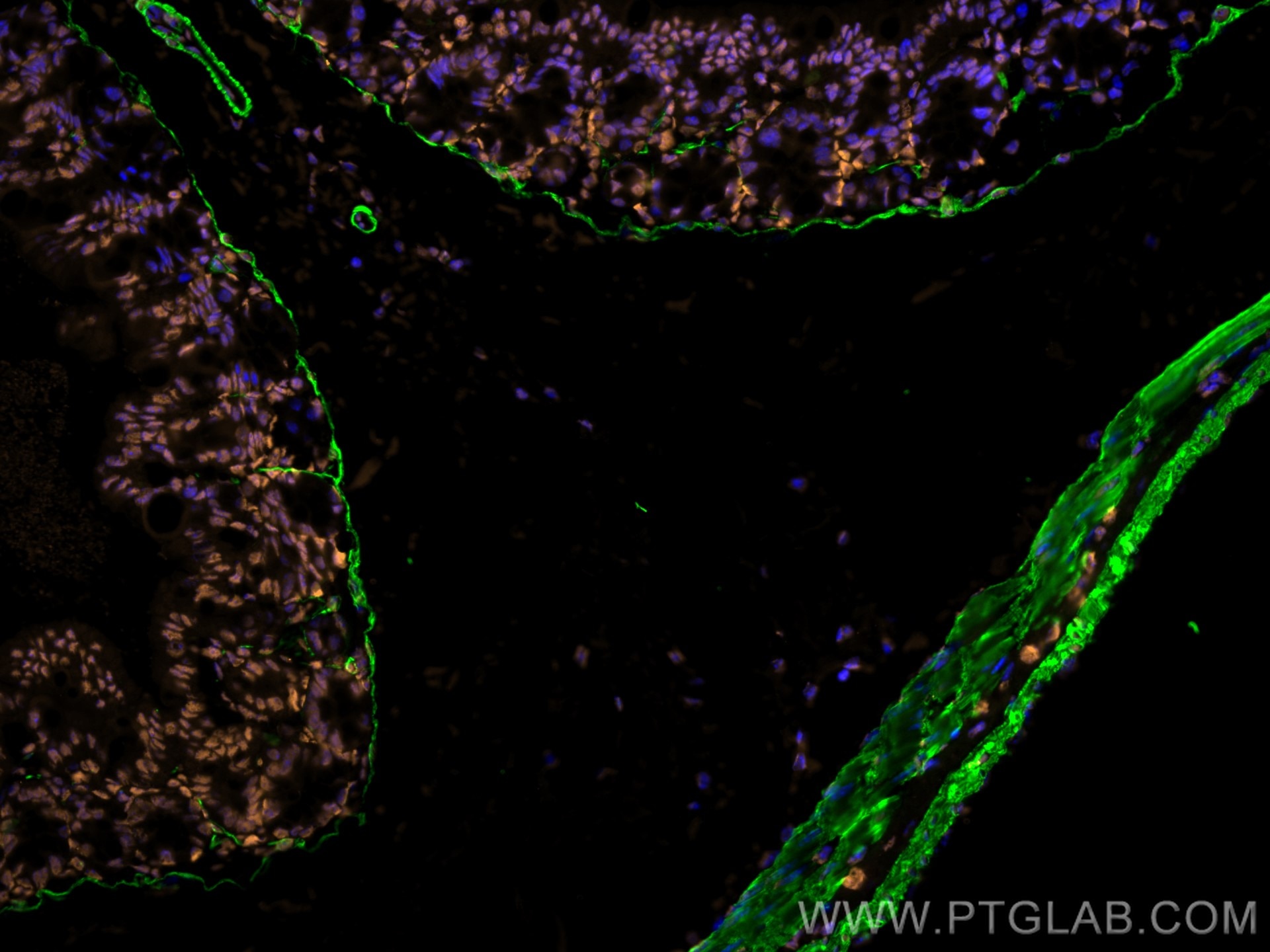Product Information
| Product name | FlexAble 2.0 CoraLite® Plus 488 Antibody Labeling Kit for Mouse IgG1 |
| Assay type | Antibody labeling |
| Tested applications | IF, FC, WB |
| Species Reactivity | Mouse IgG1 |
| Antibody amount per labeling reaction | 0.5 µg antibody |
| Conjugate | CoraLite® Plus 488 |
| Excitation/Emission maxima wavelengths | 493 nm / 522 nm |
Kit Components
| Component | 10rxns | 50rxns | 200rxns |
|---|---|---|---|
| FlexBuffer | 100ul | 500ul | 2000ul |
| FlexLinker 2.0 CoraLite® Plus 488 for Mouse IgG1 | 10ul | 50ul | 200ul |
| FlexQuencher for Mouse IgG1 | 20ul | 100ul | 400ul |
Ship Condition
shipped on blue iceStorage Condition
Store for 1 year at -20°C or for 6 months at +4°C upon receipt. Avoid exposure to lightFAQ
Q: What is the difference between FlexAble and FlexAble 2.0 products?
A: FlexAble 2.0 has been improved to allow for more dyes per FlexLinker than the previous version of the kit. This results in an increased signal per antibody.
Q: What are the FlexLinker, FlexQuencher and FlexBuffer?
A: The FlexLinker is a small polypeptide to which dyes are covalently conjugated that can label unconjugated primary antibodies. The FlexQuencher is an Fc-containing fragment that neutralizes the excess FlexLinker. The FlexBuffer is a PBS-based buffer.
Q: What is the largest quantity I can label?
A: With a standard kit size (50 reactions), you can label 25 µg of one antibody or up to 50 different antibodies. You can easily scale up the antibody amount per labeling approach.
Q: What is the lowest concentration of my primary antibody that I can use?
A: Our protocol uses 0.5 µg of primary antibody in 7 µL, which ends up at 0.07 mg/mL. If the concentration of your antibody is lower, you can also use a larger volume than 7 µL.
Q: Can I label primary antibodies stored in BSA, glycerol, Tris buffer and/or preservatives?
A: Yes, FlexAble Antibody Labeling Kits have been validated with carriers and amine buffers. Neither BSA nor amine buffers, in any chosen concentration, interfere with the labeling. 50% glycerol as well as preservatives like sodium azide are also compatible with the kit.
Q: How many different primary antibodies can I label with one kit?
A: You can label up to 50 different antibodies with our FlexAble 50 rxn Kit, and up to 10 antibodies with our FlexAble 10 rxn Kit.
Q: Will I observe cross-reactivity/leaking when I use two FlexAble-labeled antibodies from the same species during multiplexing?
A: FlexAble labels primary antibodies with a high affinity FlexLinker. Dissociation of FlexLinker from one antibody and association to another antibody is rare. If you observe leaking, we recommend adding more FlexQuencher to remove unbound FlexLinker, or you can try sequential staining of the labeled antibodies.
Documentation
| SDS |
|---|
| KFA521-SDS-FlexAble 2.0 CoraLite Plus 488 Antibody Labeling Kit |
| Protocol |
|---|
| Protocol-FlexAble and FlexAble 2.0 Antibody Labeling Kits |
| Datasheet |
|---|
| FlexAble 2.0 CoraLite® Plus 488 Antibody Labeling Kit for Mouse IgG1 Datasheet |
| Customer testimonials |
|---|
| Léa Pechtimaldjian on Advancing 3D Vascular Imaging with FlexAble Technology |
| White papers |
|---|
| Efficient Hybridoma Screening with FlexAble Antibody Labeling Kits |
Reviews
The reviews below have been submitted by verified Proteintech customers who received an incentive for providing their feedback.
FH Xiaogang (Verified Customer) (11-20-2025) | We use the ordered product (FlexAble 2.0 CoraLite® Plus 488 Antibody Labeling Kit for Mouse IgG1) to label our primary antibody for detecting the membrane vesicles using fluorescent nanoparticle tracking analyzer, and it actually worked very well.
|
FH Anchit (Verified Customer) (10-15-2025) | Worked well, but there was some additional background stain
|
FH Annika (Verified Customer) (10-13-2025) | Attempted to conjugate a DLG primary antibody to stain synapses in larval Drosophila. Was unable to visualize boutons with the conjugated antibody (perhaps as the signal is low and the conjugate removes the signal amplification).
|
FH Oussama (Verified Customer) (08-04-2025) | The conjugation kit was used to help with the advancement of my project by allowing the possiblity of multiplexing.
|
FH Carol (Verified Customer) (10-04-2024) | I've used several FlexAble 1.0 kits for Rabbit and Mouse antibodies (488, 555, 657, & 750) and was generally pleased with how they worked, but obviously the resulting IFs were much weaker than if I'd used a secondary Ab to amplify. One of the reps reached out to me to offer a sample of the new FlexAble 2.0 since I've ordered quite a few of the original kits previously, explaining tht there were more fluorphores per linker and therefore should be brighter. I'm super pleased the the result (see attached slide for details and images), as I really needed this antibdy to work for a multiplex but the original kit was a bit weaker than I'd hoped. The updated one provides a much greater signal:background ratio, so I'm more confident using it in my multiplex assay. The actual conjugation process is super straightforward and I've never had one not work with an antibody that I'd previously validated using a secondary (have used the kits with roughly 10 primary antibodies so far).
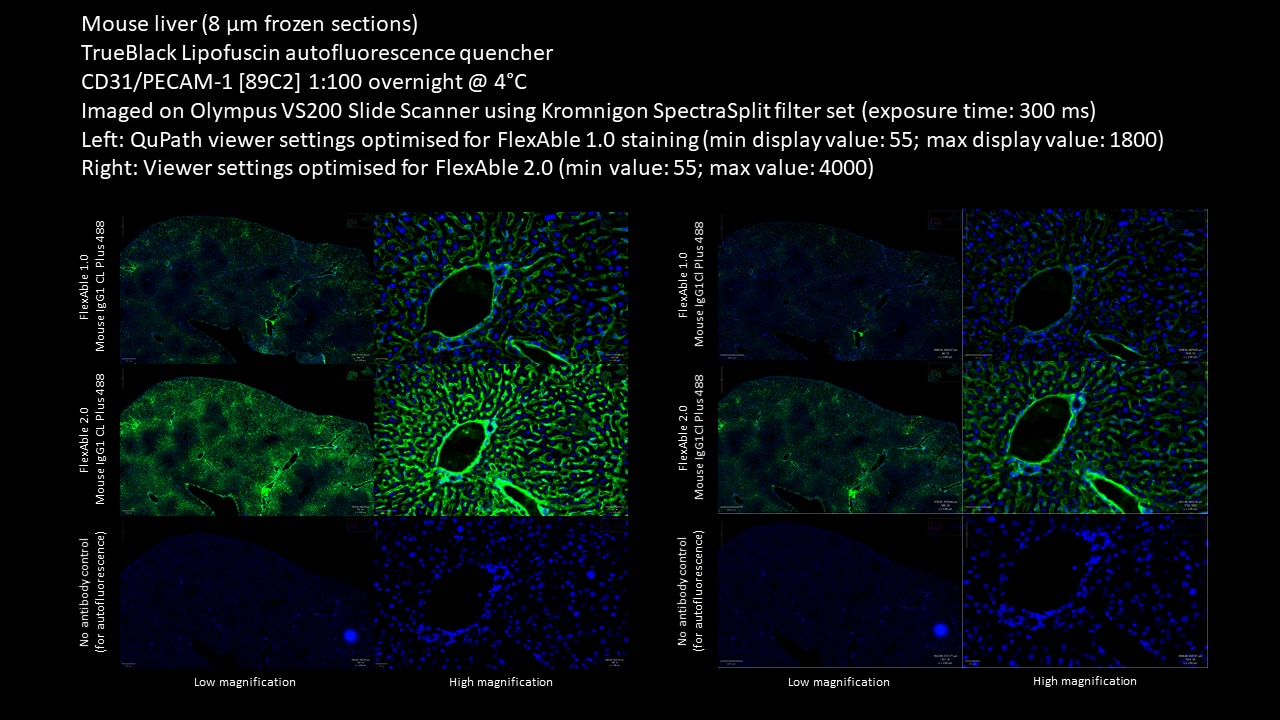 |

